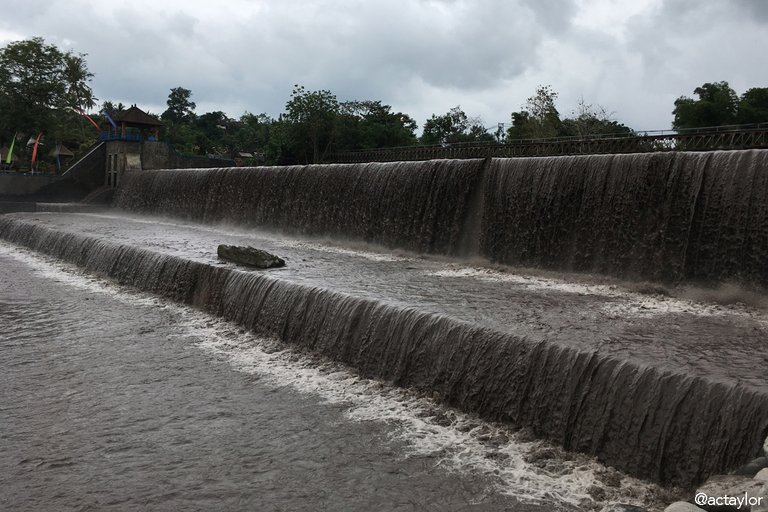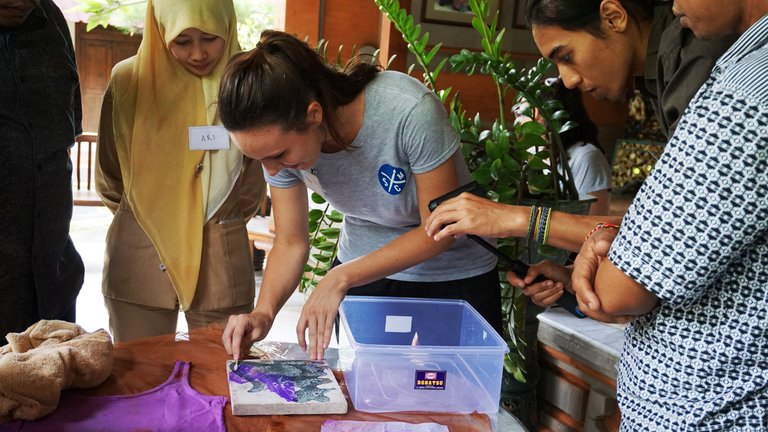In a Statement released yesterday on the 6th of February 2024, the Institute of Conservation UK (Icon), a registered charity in England, Wales, and Scotland that promotes protecting, preserving and promoting our treasured cultural heritage expressed profound concern over the escalating violence in Israel and Palestine, particularly in Gaza…
 Icon’s Statement on the Destruction of Cultural Heritage in Gaza > source
Icon’s Statement on the Destruction of Cultural Heritage in Gaza > source
It’s hard to believe that Empires – including the ancient Egyptians, Assyrians and Romans – have come and gone from Gaza. Greeks, Jews, Persians and Nabateans have lived here. Since at least 1300 BC, the Via Maris, which cut across Gaza’s western coastline – a route that ran from Heliopolis in ancient Egypt to the Syrian lands – brought in a current of international traders, explorers, practitioners, intellectuals... Yet, in the space of months, that legacy has been shaken right down to its foundations… some of it has even been wiped from existence. As Aljazeera puts it, “while cultural genocide erases tangible heritage like museums, churches and mosques, intangible heritage includes customs, culture and artefacts. These, too, have been damaged…"
Recognising Gaza's rich historical significance, including ancient churches, mosques, and archaeological sites dating back thousands of years, Icon's Statement emphasised the urgent need to protect and preserve what remains. One poignant paragraph references the Library of the Great Omari Mosque, once home to 20,000 rare books and manuscripts. “Many of these were lost or destroyed during the Crusades and World War I and the remaining 62 rare books, although digitised and accessible via the British Library, were destroyed in hard copy during a strike on 8 December.”
We are witnessing a cultural genocide - right here, right now.
The article evoked memories from 2017, when a cohort from the University of Melbourne, including myself, founded "Konservaction" in response to the eruption of Mount Agung. Although in no way comparable to the disaster that is happening in Gaza right now, I’d like to take a few minutes of your time to reflect on this initiative as an example of cross-cultural collaboration in response to a disaster scenario.
Konservaction was pulled together very quickly in response to a call for aid. Our aim being to safeguard Indonesian heritage through international collaboration, focusing on skill development in project management, workshop delivery, and cross-cultural teaching.
 Screenshot of museums in relation to Mount Agung > source: Konservaction archive
Screenshot of museums in relation to Mount Agung > source: Konservaction archive
 The volcano Mount Agung erupting; a recording of its seismic activity > source: Konservaction archive
The volcano Mount Agung erupting; a recording of its seismic activity > source: Konservaction archive
 Lahar flow > source: Konservaction archive
Lahar flow > source: Konservaction archive
Almost as soon as we arrived, the volcano began to erupt. The airport was closed for 3-4 days as 100, 000 people were evacuated (for details, click here). My team and I launched into action, visiting nine museums and – in collaboration with staff onsite – establishing Disaster Preparedness plans that would help see the selected sites through the looming disaster. To clarify, out of the nine museums we arranged to visit, six indicated that they lacked any substantial disaster recovery or response plan, while seven mentioned the absence of a dedicated disaster response team.
This facilitated the organization of our site visits, during which we engaged in discussions with each cultural institution regarding the significance of implementing plans to protect collections, staff, and visitors from potential hazards. The experience made it very evident, at least to me as an emerging conservator, that the destruction of museums, heritage sites, and libraries underscores the dire situation faced by cultural heritage professionals striving to safeguard their heritage in times of disaster. Zooming out to look at the the bigger picture, however, reinforces how great a loss losing ones legacy can be. Cultural heritage is an inexhaustible resource for representing identity.
 Disaster Preparedness Workshop > source
Disaster Preparedness Workshop > source
 An elder demonstrating carving the Lontar text, source: Konservaction archive
An elder demonstrating carving the Lontar text, source: Konservaction archive
At Museum Lontar – a new museum being developed by the community of Dukuh Penaban - the village elders are its caretakers. Together they house around 400 Lontars in their homes. The Lontar is an ancient Hindu religious text inscribed onto dried/cured palm leaves, some over 100–400 years ago often sung as hymns. Here, one of the elders demonstrates how to inscribe the sacred text.
 Nyoman Gunarsa Museum > source: Konservaction archive
Nyoman Gunarsa Museum > source: Konservaction archive
 Kecak dance > source: Konservaction archive
Kecak dance > source: Konservaction archive
Dr. Bill Wei, a senior conservation scientist who works in the Netherlands, posed the following question in his “Socratic Dialogues” sessions, which I participated in back in 2022 - run by the International Institute for Conservation of Historic and Artistic Works (IIC).
If there is any object in the world that you would like to preserve for future generations, what would it be and why?
I guarantee you, no two Hivers here will have the same answer to that very question. I believe that this is because our interpretation of cultural heritage is intrinsically personal. Heritage can be physcial, but it can also be incredibly abstract. It is a concept that is in constant flux. Both tangible and intangible elements are attributed value across all communities, and these dynamics shift in present time according to changing trends and crises.
The downside is… although this multi-stakeholder network can operate pro-actively in the historic environment sector, with it comes spill-over effects; social, economic, political to name a few. It is this fundamental need to maintain cultural property that has led to an increased demand from stakeholders, professionals and practitioners for a reconsideration of the significance of threats – from natural disasters like the 2017 Mount Agung eruption in Bali, to the genocide that is currently taking place in Gaza. Alongside Icon, other cultural heritage organisations have recently issued statements, including ICOM and the Museums Association.
As a painting’s conservator, my job does not put me at the forefront of any political, social or economical change – someone in my position is expected to remain hidden behind closed doors... secretive, furtive… their sole focus being the objects that they handle… But, spurred by Icon’s Statement, I can’t help but feel restless - conscious that perhaps the position I am in isn't a neutral one.
Cultural heritage is transitioning, in real time, into something crucially more. The absolutely abhorrent, appalling, and devastating impact on human lives and cultural heritage currently taking place in Gaza emphasises that the interaction between heritage and people set the standard for growing respect, understanding and valuation of authorship, agency and being. Culture is a fundamental aspect of who we are as individuals. Without it we’re lost.
Congratulations @actaylor! You have completed the following achievement on the Hive blockchain And have been rewarded with New badge(s)
Your next target is to reach 200 replies.
You can view your badges on your board and compare yourself to others in the Ranking
If you no longer want to receive notifications, reply to this comment with the word
STOPCheck out our last posts: